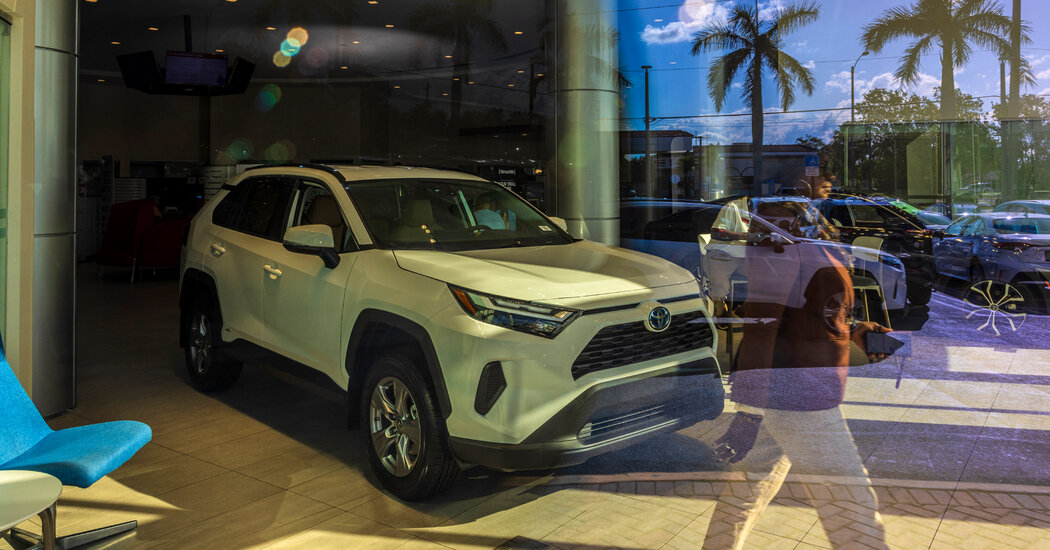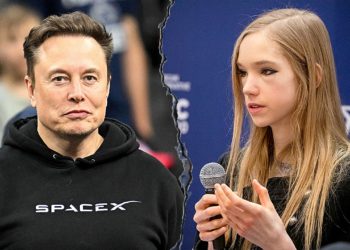There are a lot of things Sarah Martens likes about the 2025 Toyota Highlander hybrid she bought a few months ago. Its pearlescent white paint shimmers in the sunlight. It has lots of safety features. And for a large sport utility vehicle, it sips gasoline, getting nearly 30 miles per gallon at times.
But the thing she likes most: It doesn’t feel like a hybrid.
“It’s so smooth,” said Ms. Martens, a Pilates instructor in Ann Arbor, Mich. “When it starts off from a stoplight or switches from electric to gas, I can’t tell I’m driving a hybrid. It just seems like I’m driving a normal car.”
Not so long ago, it seemed that the heyday of hybrids had come and gone. As Tesla and the potential of electric vehicles grabbed the imaginations of drivers and automakers, hybrids appeared destined to be remembered as an interim step on the way toward a fully electric, emissions-free future.
Just four years ago, for example, General Motors set a goal of ending production of all internal combustion models by 2035, and all but eliminated hybrids from its future product plans. Other manufacturers also bet heavily on electric vehicles and scaled their hybrid plans.
But then a funny thing happened. Car shoppers balked at the high prices of fully electric models and the challenges of charging them. In the last few years, sales of electric vehicles have grown at a much slower rate than automakers once expected. And hybrids have stepped in to fill the gap, accounting for a large and growing share of new car sales.
“People like the attributes that hybrids bring to the table,” said Jessica Caldwell, executive director of insights at Edmunds, a market researcher. “They offer better mileage than pure gasoline models, and the prices are pretty close to pure gas vehicles, so they’re much more affordable than E.V.s.”
In the first three months of this year, hybrids — including cars that can and cannot be plugged in — made up about 14 percent of all light vehicles sold in the United States, according to the Department of Energy. That was around twice the market share of fully electric vehicles in that period.
Republican legislation working its way through Congress could further lift sales of hybrids. In May, the House passed a policy bill backed by President Trump that would eliminate a $7,500 tax credit available to people who bought or leased electric vehicles. That legislation would also impose an annual tax of $250 on electric cars and $100 on hybrids to finance road projects. The Senate version of the bill introduced this week would do away with the tax credit, too, but does not include the annual tax.
A few large automakers dominate the sale of hybrids.
Nearly half the cars and trucks that Toyota and its luxury brand, Lexus, sold in the first five months of the year were hybrids — and sales of those vehicles were up about 40 percent from a year earlier. Ford Motor’s hybrid sales rose 31 percent in the same period. Honda is on track this year for its highest hybrid sales ever, and the hybrid versions of its Accord sedan and CR-V sport utility vehicle now outsell the gasoline-only models.
Hybrids are typically powered by a small gasoline engine that is paired with an electric motor driven by a battery that is much smaller and, thus, less expensive than the batteries in fully electric vehicles. These batteries are charged primarily by regenerative brakes and gasoline engines.
Plug-in hybrids, which account for a small share of hybrids, have bigger batteries than regular hybrids and can also be charged from power outlets at home or at charging stations. Some plug-ins can go around 50 miles on battery power alone before the gas engine kicks in.
Hybrid technology burst onto the automotive scene more than two decades ago when Toyota introduced the Prius, which was able to go more than 45 more miles on a gallon of gas — a remarkable feat at the time.
Early hybrids, including the Prius, sometimes felt a little clunky as they switched from gas engine to electric motor and back, and many were small vehicles that lacked the power and room some drivers were accustomed to. Some auto engineers at rival car companies brushed the Prius off as a toy, and objected to the idea of a car’s having two propulsion systems under the hood because they found it too complicated or unconventional.
But when gasoline prices rose in the early 2000s, the Prius drew raves from environmentally minded consumers and cost-conscious drivers. As Prius sales took off, other automakers hopped on the hybrid bandwagon.
Hybrids gained proponents especially in periods when gas prices spiked. But once Tesla’s sales took off in the middle of the last decade, the industry’s focus shifted to electric vehicles.
Consumer are now gravitating toward hybrids because the technology has improved significantly. Batteries are smaller in size but hold more power. The switching between the gas engine and the electric motor — as Ms. Martens has noticed — is now pretty seamless.
“When the Prius came out in 1997, it was mostly tuned to be fuel-efficient,” said David Christ, group vice president and general manager for the Toyota brand in North America. “But we’ve had 25 years to refine the technology in a way that makes our hybrids not only fuel-efficient but also fun to drive.”
The hybrid version of Toyota’s RAV4, Mr. Christ noted, now has more power and torque than the pure gasoline version.
At the same time, automakers have created hybrid versions of all types of vehicles, and have found ways of using the hybrid’s battery to offer consumers additional features. Ford offers a hybrid version of its F-150 pickup truck that can run power tools and lighting on job sites. The truck can also provide electricity during power outages.
“I think a lot of consumers are seeing that it’s a better propulsion system,” said Jim Baumbick, Ford’s vice president of advanced product development, cycle planning and programs. “You get better fuel economy, and it unlocks a lot of new capabilities that they never had before.”
And in some cases, automakers have decided hybrid technology is the only way to go. Several mainstream Toyota models, including the Sienna, Camry, Crown and RAV4, are or will soon be available only as hybrids.
Several automakers are slowing the introduction of new electric vehicles, and have accelerated development of new hybrids. Hyundai plans to double its hybrid offerings to 14 models. Ford plans to make hybrid variants across its model line by the end of the decade. Stellantis, which already makes plug-in versions of its Pacifica minivan and certain Jeeps, plans to add a hybrid option for its Jeep Cherokee and Ram pickup.
“There are still people who don’t like hybrids and don’t want hybrids. They still want a V8 or just that raw power,” Ms. Caldwell said. “But it’s a shrinking number. There’s definitely a lot less resistance to hybrids now.”
Neal E. Boudette is based in Michigan and has been covering the auto industry for two decades. He joined The New York Times in 2016 after more than 15 years at The Wall Street Journal.
The post Hybrid Cars, Once Derided and Dismissed, Have Become Popular appeared first on New York Times.




